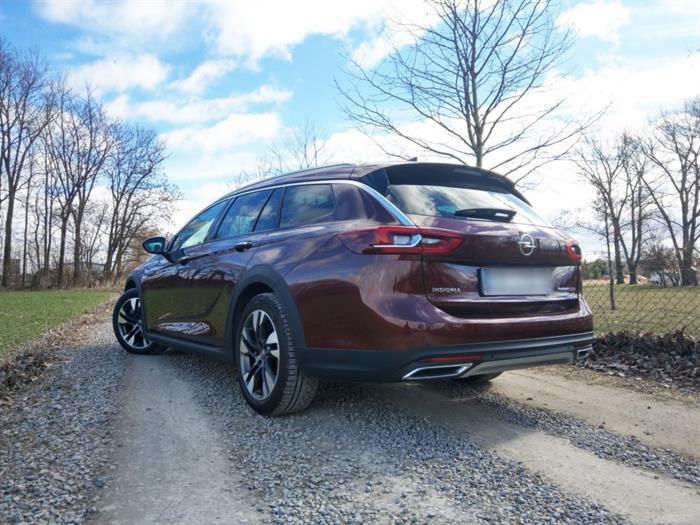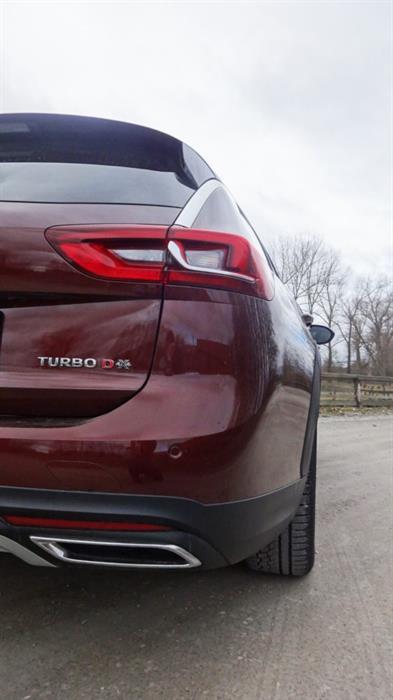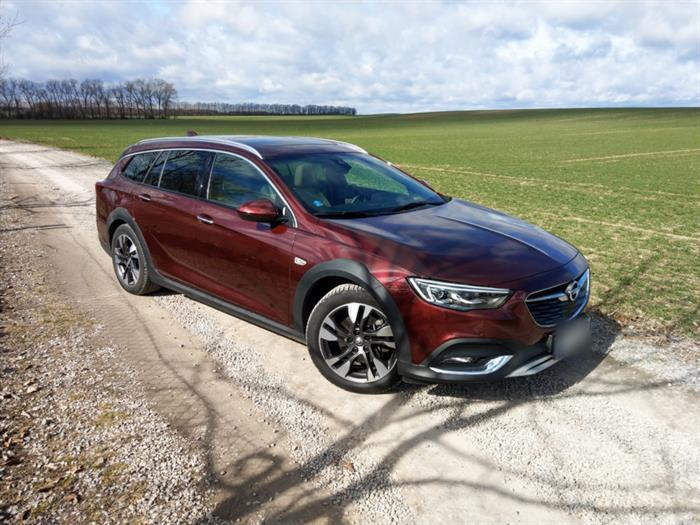The second generation Opel Insignia became my editorial car of the week. This successful second generation has already passed our editorial test in the past and was tested by my colleague Petr. So I had to wait. But it seems that the wait was quite worthwhile, because I currently got my hands on a decent model with a two-liter biturbo engine, an eight-speed automatic, all-wheel drive and in the Country Tourer design.

Decent exterior
The second generation Insignia is a really handsome car in terms of exterior design. This is a large car that works with pleasing proportions. The discussion of individual details is quite settled as a result, but as a whole the car works very well. On the Insignia, the contour of the tested station wagon body design is highlighted by a chrome strip that is discreetly integrated into the rear taillights. The huge "backpack" of the luggage compartment is very elegantly integrated into the body of the second generation. The car looks very fresh and dynamic. The winged lightning then becomes the main motif of the front mask.
The Country Tourer version then additionally opened the car with protective plasticizing of the edges and thresholds of the car. Personally, I am not a big fan of this "invitation to the terrain", because increasing the chassis by 25 mm, as it happens specifically in the case of the Insignia, is no miracle. Nevertheless, I believe that for many of us this "scout" variant can be a great attraction.
As a result, I would evaluate the car's exterior design only positively, its large external dimensions can elegantly camouflage the car. In addition, the protective plastic coating gives it a certain robustness compared to its siblings.

Spacious interior
The interior of the tested piece appeals with a great-looking bright design. I'll leave it up to you to decide how practical this choice is in the context of light terrain gens.
After sitting down and then adjusting the seat and steering wheel to a position that suits my proportions, comes the first look around the car. The interior is very decent, clear and, at first glance, spacious. Immediately after leaving the dealer, however, there are some bangs from the trunk area. So I stop at the first possible place and go to see what surprise awaits me. Unfortunately, there are no surprises, it is only a forgotten pet water bottle. But what strikes me is the enormous legroom behind the driver's seat. I'm definitely not a "Habán", but the gap surprised me a little, it's really big. The luggage compartment itself is, as expected, spacious and has a volume of 560 liters. As usual, I sat relatively low in the car, so I enjoy the pleasant surroundings of the strictly horizontally oriented dashboard and quite bulky central panel. The dashboard then has a classically integrated eight-inch touchscreen, which is equipped with graphics with a clear and clearly legible display. The controls for this display are located below the display, and the air conditioning controls are located one level below. The central tunnel is dominated by the classic automatic transmission selector, which has a very smooth and smooth operation. There are also controls for selecting the driving mode, switching off the start x stop system, or the lane keeping assistant.
The seats themselves are very comfortable and spacious, both in the front and rear positions. The interior of the tested piece had the OPC package, which has sports pedals, a heated steering wheel, or black upholstery on the ceiling. The ceiling area was further improved by the panoramic window, which was also partly openable.

Diesel BiTurbo
The motorization of the tested car was represented by the most powerful biturbo diesel variant with a volume of two liters and an output of 154 kW. It worked with an eight-speed automatic transmission, which distributed all 210 horses to all four wheels.
All-wheel drive is provided by the Twinster system, which is not a classic "differential" four-wheel drive. The absence of an inter-axle differential and a rear axle differential is solved here by a system that has a pair of independently controlled clutches.
The tested Insignia really offered plenty of driving comfort. The pleasant cooperation between the powerful motorization and the well-functioning automatic is complemented by an excellent chassis. It was also adaptive and, in addition to the normal mode, it will also offer TOUR and SPORT modes. The TOUR mode has a softer suspension than the classic mode. The SPORT mode is noticeably harder, the transition here is clearly visible. The shock absorbers stiffen considerably, the steering also stiffens and the car's response to the gas pedal changes. As a result, the somewhat sharper sports mode did not suit the car very well. The main positives of the Insignia are the great peace and comfort that prevail on board during the drive.

Also worth mentioning are the additional LED Matrix lights, which contribute to good driving comfort. The lights consist of more than two dozen LEDs that can be activated and deactivated automatically. The result is quite fast detection of oncoming vehicles and prevention of their possible glare. The shading of the individual parts takes place continuously, so it is a kind of effective "light curtain" that is constantly retracting and expanding in front of you.
As for consumption, here the tested Insignia shows its predisposition of a large, not quite light car, which has a powerful engine, automatic transmission and all-wheel drive. Therefore, the consumption within the weekly test ranged around an understandable eight liters.

Conclusion
My first meeting with the second generation Opel Insignia was definitely a success. Not only a powerful engine or a pleasant external appearance, the Insignia will also offer a large interior space, both in the passenger compartment and in the trunk. The interior is then very pleasantly conservative and high quality.
And how much will we actually buy the current second generation for? Looking at the current price list, I learn that the basic price for the Country Tourer version with a two-liter diesel engine and a six-speed manual starts at CZK 885,990 including VAT. You can buy a car matching our specification, i.e. a two-liter diesel biturbo with an eight-speed automatic and all-wheel drive, from CZK 1,015,990 including VAT.






























